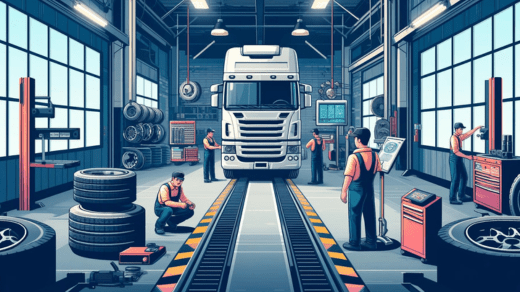Truck wheel alignment might not be the first thing that comes to mind when considering vehicle maintenance, but it plays a crucial role in ensuring safe and efficient travels on the road. In this article, we delve into the significance of truck wheel alignment, its benefits, and why it should be a priority for every truck owner.
What is Truck Wheel Alignment?
Truck wheel alignment refers to the adjustment of the angles of the wheels to the manufacturer’s specifications. These angles include camber, caster, and toe. Proper alignment ensures that the wheels are parallel to each other and perpendicular to the ground, optimizing tire performance and vehicle handling.
Signs of Misalignment
Identifying signs of misalignment early on can prevent further damage to your truck and ensure a smoother ride. Common signs include uneven tire wear, steering wheel vibration, and the truck pulling to one side while driving. If you notice any of these signs, it’s crucial to have your truck’s alignment checked promptly.
Benefits of Proper Alignment
- Improved Fuel Efficiency: Misaligned wheels can cause increased rolling resistance, leading to higher fuel consumption. By maintaining proper alignment, trucks can achieve better fuel efficiency, ultimately saving on fuel costs.
- Extended Tire Life: Proper alignment distributes the weight of the truck evenly across all tires, reducing uneven wear and prolonging tire life. This not only saves money on frequent tire replacements but also ensures safer travel by maintaining tire integrity.
- Enhanced Safety: Correct wheel alignment improves vehicle handling and stability, especially during emergency maneuvers. This is crucial for truck drivers who often encounter challenging road conditions and heavy traffic.
The Alignment Process
Truck wheel alignment is a precise process that requires specialized equipment and trained technicians. During the alignment procedure, technicians adjust the angles of the wheels according to the manufacturer’s specifications using computerized alignment machines. This ensures accuracy and consistency in the alignment process.
Importance of Regular Maintenance
Regular maintenance, including wheel alignment checks, is essential for the overall health and performance of your truck. Just like any other vehicle component, truck wheels undergo wear and tear over time, affecting alignment. Incorporating alignment checks into your maintenance schedule can prevent costly repairs down the road and keep your truck operating at its best.
Windshield Replacement and Alignment
While truck wheel alignment focuses on the chassis and wheels, other aspects of vehicle maintenance are equally important. Windshield replacement is one such critical task that ensures the safety of truck drivers and passengers. A cracked or damaged windshield compromises visibility and structural integrity, increasing the risk of accidents.
When replacing a windshield, it’s essential to consider its impact on truck wheel alignment. While windshield replacement itself doesn’t directly affect alignment, certain installation techniques or mishaps during the replacement process can inadvertently cause misalignment. Therefore, it’s advisable to have the truck’s alignment checked after windshield replacement to ensure everything is in proper order.
Conclusion
Truck wheel alignment is not just about keeping the wheels straight; it’s about ensuring safety, efficiency, and cost-effectiveness on the road. By prioritizing regular alignment checks and addressing any issues promptly, truck owners can enjoy smoother travel, extended tire life, and improved fuel efficiency. Combined with other maintenance tasks like windshield replacement, proper alignment contributes to the overall performance and longevity of your truck. Make wheel alignment a priority, and reap the benefits of a well-maintained vehicle.










Leave a Reply
You must be logged in to post a comment.